Discover a simple and quick recipe for a delicious no-knead bread requiring only 3 ingredients! Perfect for both novice and experienced bakers, this homemade delight offers a hassle-free bread-making method that skips traditional kneading.

Pair this freshly baked 3-ingredient no-knead bread with a variety of meals for breakfast, lunch, or dinner:
- Breakfast: Enjoy it with a low-calorie cabbage frittata packed with veggies for a healthy start to your day.
- Lunch: It’s perfect alongside an eggplant salad or my bean spread.
- Dinner: Serve it with roast cauliflower or an aubergine recipe for a unique combination. It also goes wonderfully with spinach and pepper chicken for a satisfying meal.
- Dessert: Treat yourself to a slice of apple cake (more apples than dough) or a yoghurt cake—both are light and sweet!
I love keeping things simple with ingredients that create delicious meals. Sharing homemade food with my family always makes the best memories.
Jump to:
💭 Expert Tips
- Patience Pays Off: Let the dough rest for an extended period, usually overnight, to allow the gluten to develop naturally, resulting in a softer texture.
- Preheat for Success: Ensure your oven is fully preheated before baking to achieve a crispy crust and an evenly baked loaf.
- Don't Overhandle: Resist the urge to knead the dough. Minimal handling preserves the airy texture and prevents the bread from becoming tough.
💗 Why you'll love this recipe
- Simple and convenient no-knead bread recipe with minimal ingredients.
- Perfect for busy days and pairs well with any dish.
- Homemade, giving you control over ingredients for a healthier option.
- Loved by kids and is low in calories, making it a family favourite.
- Great make-ahead option—prepare, store, and reheat when ready!
🍞 Ingredients

*See the recipe card for full information on ingredients and quantities.
- All-purpose flour: You can choose bread flour as well for a stronger gluten structure and better rise, especially for chewy artisan loaves.
- Salt: Use kosher or sea salt for optimal taste.
- Dry yeast: Instant yeast is convenient and requires no proofing, while active dry yeast can be activated in warm water before being added to the loaf mixture.
- Warm water: Aids in activating the yeast, around 100°F or 38°C. Use a kitchen thermometer to ensure the water is at the correct temperature for yeast activation.
📋 Variations
- Whole Wheat: Use 250g whole wheat flour and 250g all-purpose flour for a balanced loaf. Increase water slightly (about 10-15ml) as whole wheat absorbs more moisture.
- Multigrain: Add 50g of a mix of rolled oats, flaxseeds, and sunflower seeds. Reduce the all-purpose flour to 450g to maintain the right consistency.
- Cheese and Herb: Mix in 100g grated cheese (cheddar, Parmesan, or Gruyere) and 2 tablespoon chopped fresh herbs (rosemary, thyme, or basil).
- Olive and Rosemary: Fold in 80g chopped Kalamata olives and 1 tablespoon fresh rosemary leaves.
- Cinnamon Raisin: Add 2 teaspoon ground cinnamon and 75g raisins to the dough. Optionally, sprinkle 1 tablespoon of the cinnamon-sugar mixture on top before baking.
- Garlic and Onion: Sauté 3 minced garlic cloves and 1 small diced onion until golden brown. Mix into the loaf mixture after cooling.
- Seeded: Incorporate 50g mixed seeds (sesame, flax, pumpkin, etc.) into the dough. Use an additional 1-2 tablespoon as a topping before baking.
- Sundried Tomato and Basil: Mix in 70g chopped sundried tomatoes and 2 tablespoon chopped fresh basil.
- Spiced: Mix 1 teaspoon each of cinnamon and nutmeg, or ½ teaspoon each of cardamom and ginger, into the mixture for a warm spice loaf.
👩🍳 How To Make 3-Ingredient No-Knead Bread
Start by prepping your ingredients for this 3-ingredient bread recipe. Measure out the flour, salt, yeast, and lukewarm water. Having everything ready makes the process so much smoother and ensures your bread turns out perfectly!
A little prep goes a long way when it comes to baking a loaf! Serve it with roast cauliflower hummus & chickpeas for a fun, seasonal treat, or cosy up with a bowl of 30-minute chicken soup for the perfect meal combo.
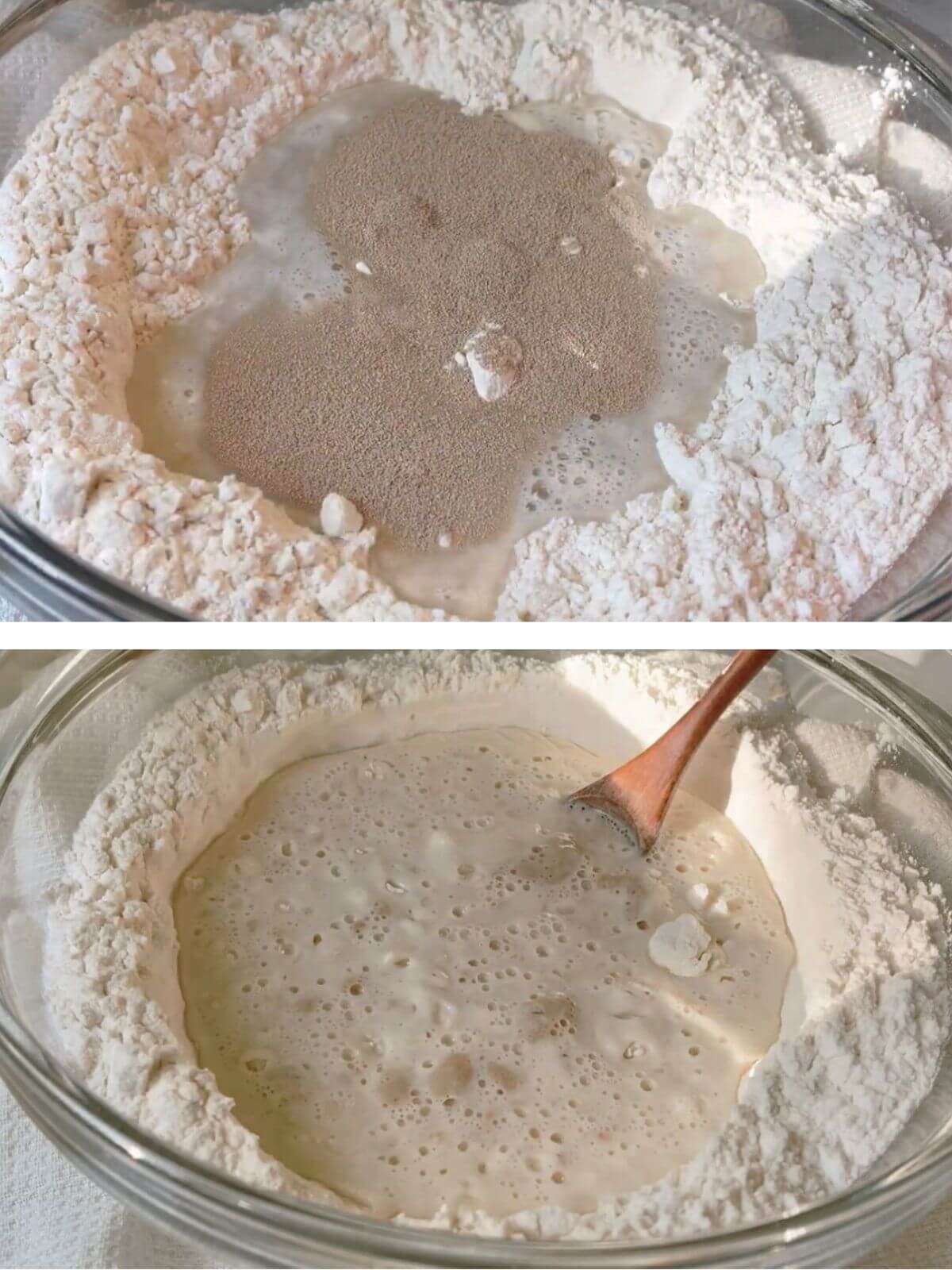
Step 1: Mix the Dough: In a large bowl, create a well with bread flour. Add lukewarm water and sprinkle dry yeast over it. Gently mix and let it rest.
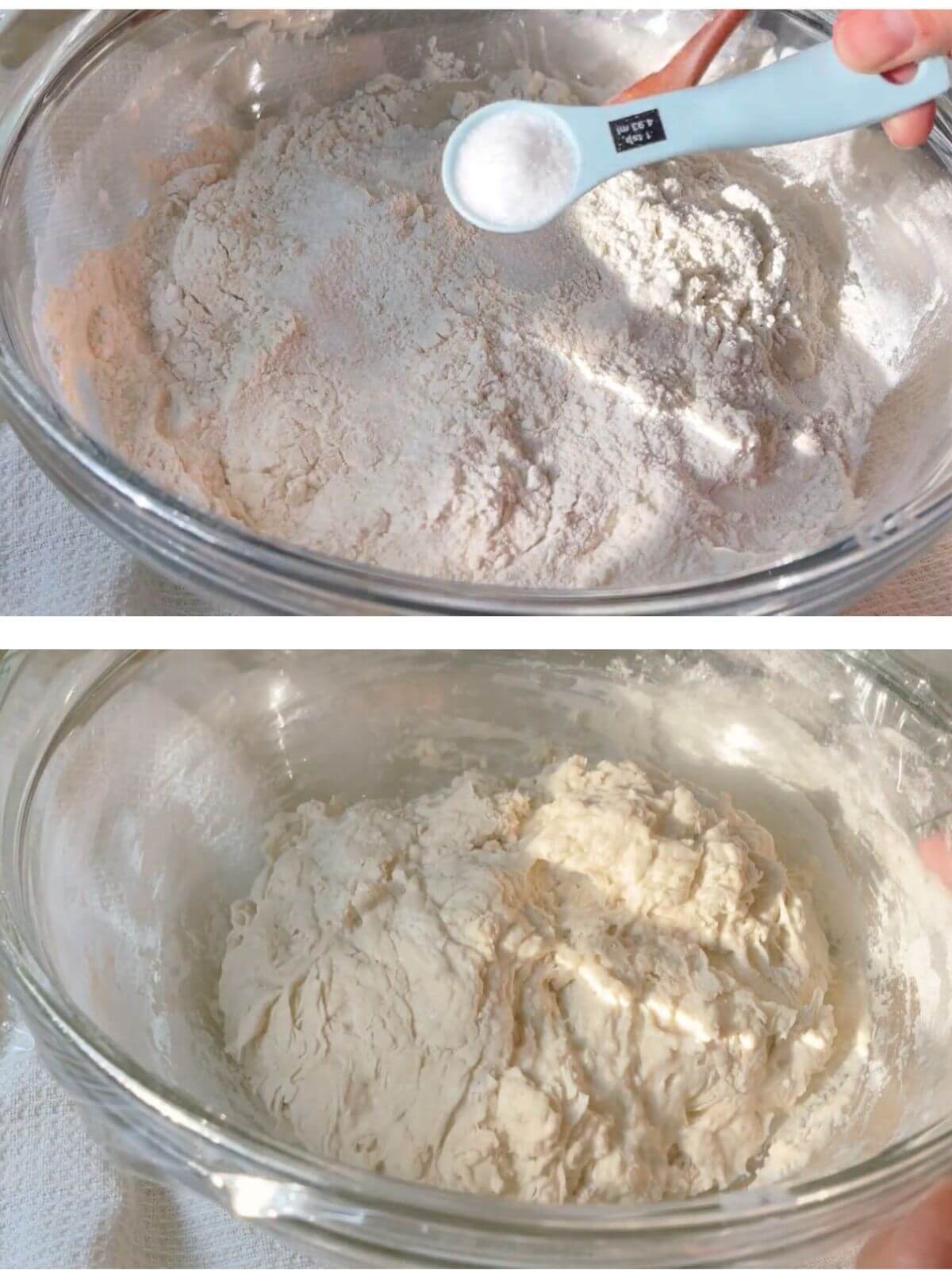
Step 2: Combine Ingredients: After resting, mix in the remaining flour, salt, and lukewarm water. Stir until a sticky, shaggy dough forms.
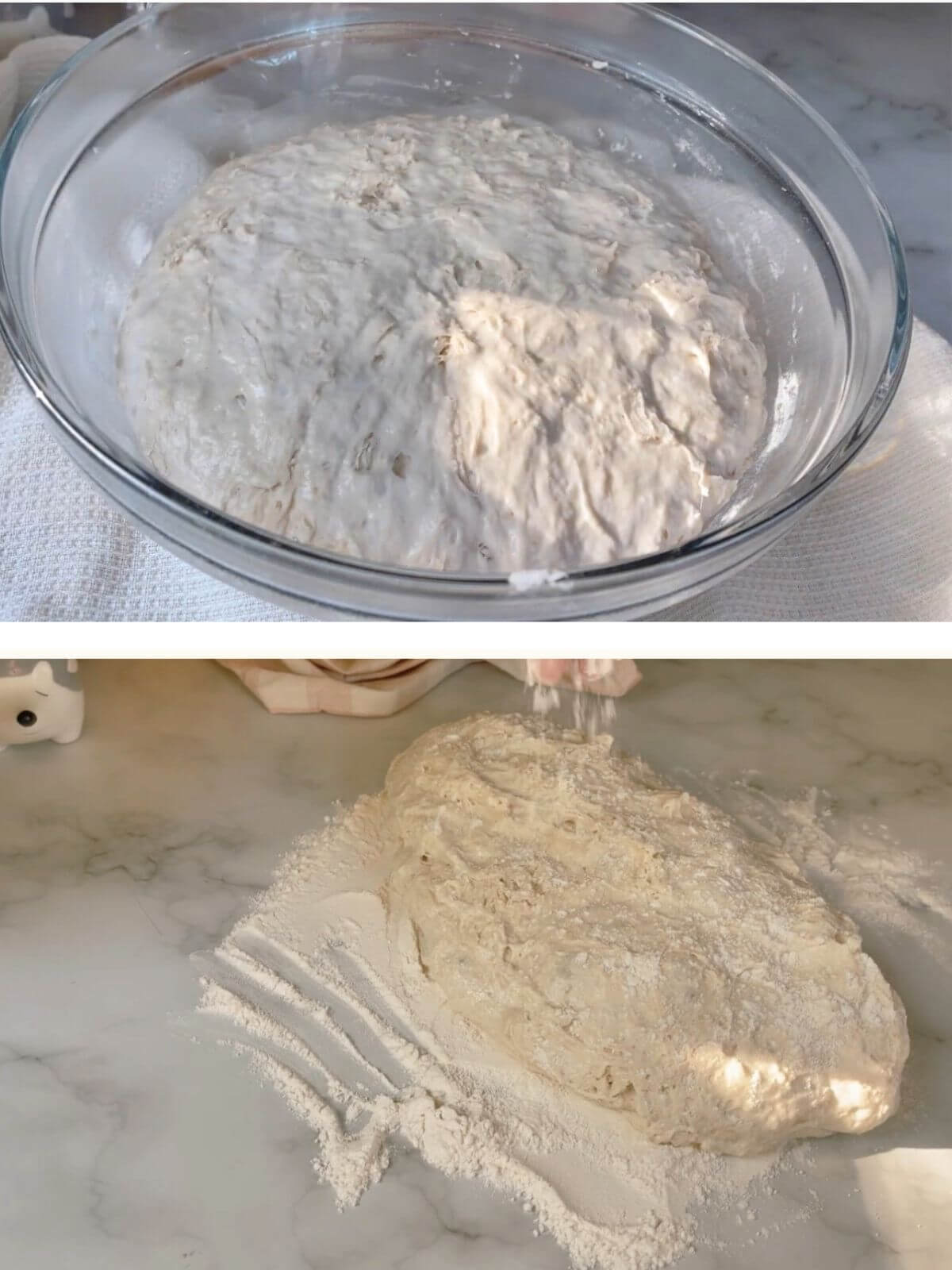
Step 3: Let It Rise: Cover the bowl with a towel and let the dough rise in a warm place until it puffs up and develops flavour.
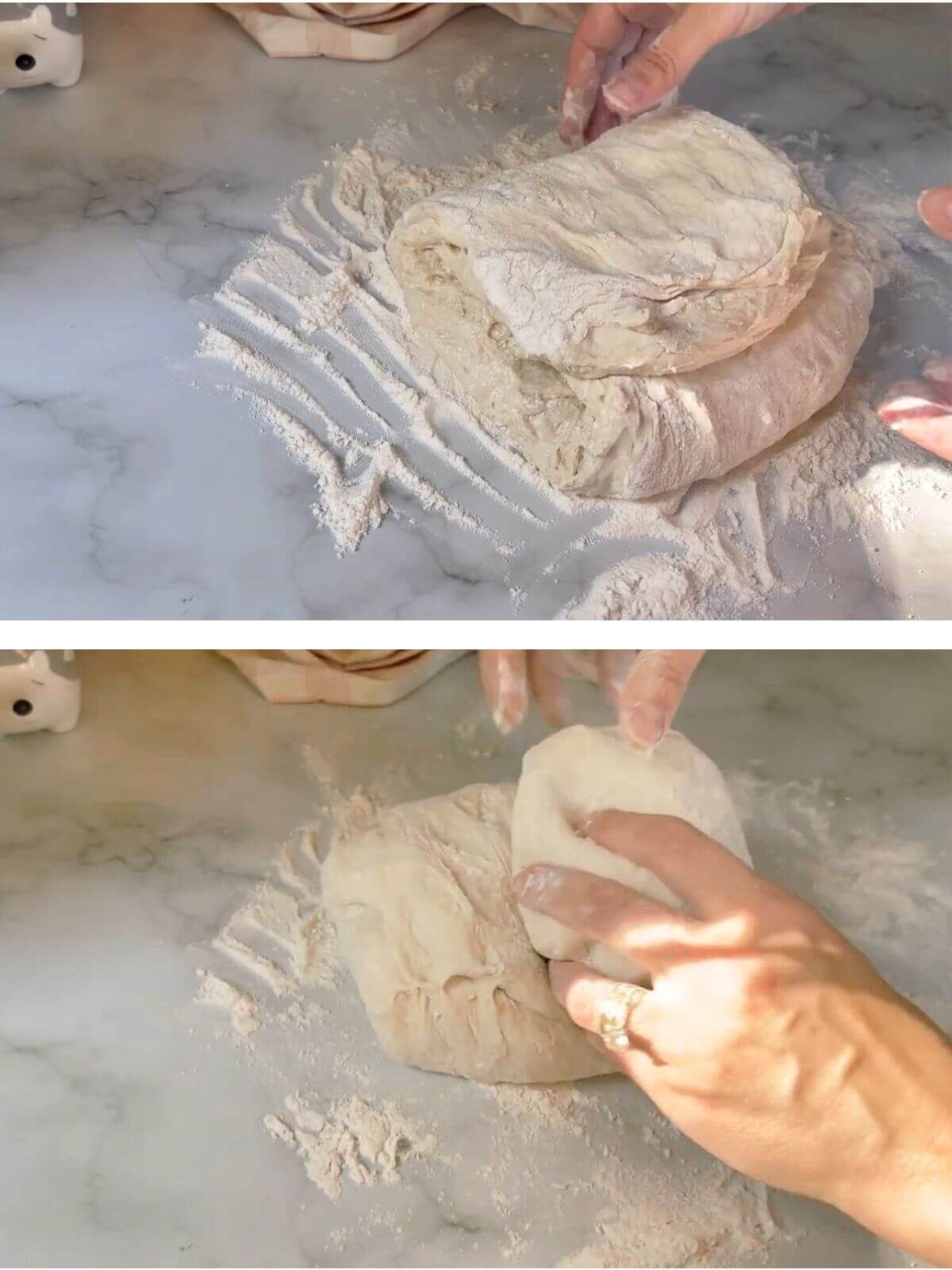
Step 4: Shape the Dough: Flour a surface and transfer the dough. Shape it into a loaf, folding the edges in for tension.

Step 5: Second Rise: Let it rise in a covered pot until it doubles in size. In the last 5 minutes, preheat your oven.
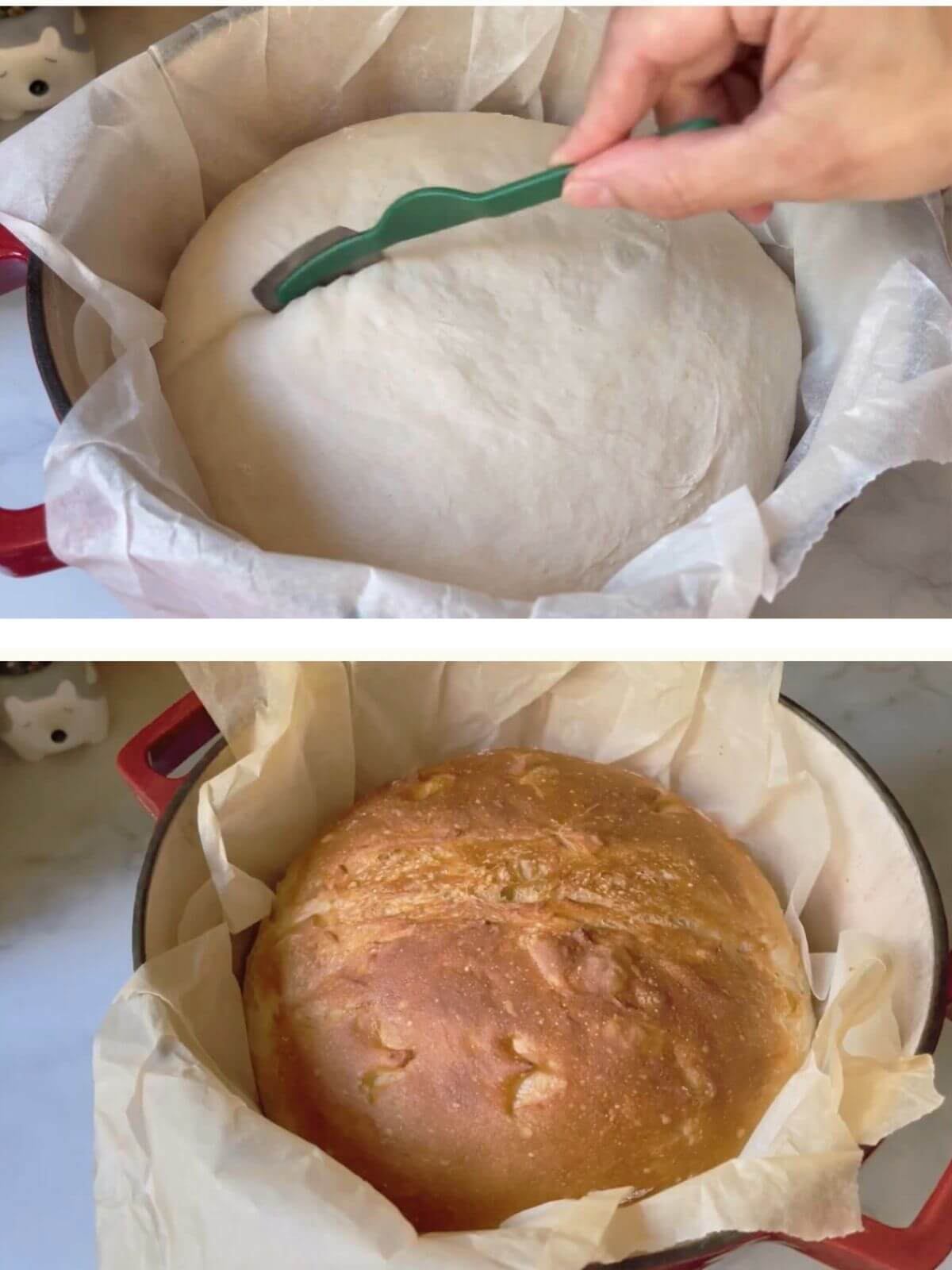
Step 6: Bake, score the dough, then bake with the lid on. After 20 minutes, uncover and continue baking until golden. Let it cool before slicing.

Storage: How to keep your bread fresh
When it comes to storing bread, it's important to preserve its texture and freshness as much as possible. So, I thought to mention a few options:
- Bread Box: Use a bread box with a tight lid to keep the bread from drying out. Store it at room temperature for a few days.
- Plastic Bag: Place cooled bread in a resealable bag to avoid condensation. Squeeze out air, seal, and store at room temperature.
- Bread Bin: A bread bin with ventilation helps control moisture and keeps the bread fresh at room temperature.
- Freezing: Wrap the cooled bread in plastic wrap or foil, then place it in a freezer bag. Freeze for up to 3 months. Thaw at room temperature or reheat briefly in the oven. Remember to slice the bread before freezing if you prefer to thaw individual slices rather than the entire loaf.
Regardless of the storage method you choose, it's important to note that the loaf is best consumed within a few days of baking for the best taste and texture.
❓ FAQs
No-knead bread is a simple method of bread-making that eliminates the need for traditional kneading. Instead, the dough undergoes a long fermentation process, allowing the gluten to develop naturally, resulting in a crusty, artisan-style loaf.
The dough for a 3-ingredient loaf recipe typically requires 12 to 18 hours of rising at room temperature. This long fermentation process enhances the bread's flavour and texture.
Yes, whole wheat flour can be used in a 3-ingredient loaf recipe. Replace part or all of the all-purpose flour, but note that whole wheat flour absorbs more water and may result in a denser loaf.
While a Dutch oven is ideal for baking a no-knead loaf recipe because it traps steam for a crisp crust, you can also use an oven-safe pot with a lid or a baking stone with a pan of water in the oven.
Common issues with a no-knead bread recipe include:
Expired or inactive yeast.
Water that is too hot kills the yeast.
Cooler room temperatures slow fermentation.
Incorrect flour measurements lead to a dense dough.
HUNGRY FOR MORE? Subscribe to my newsletter and follow along on Facebook, Pinterest, and Instagram for the latest updates.

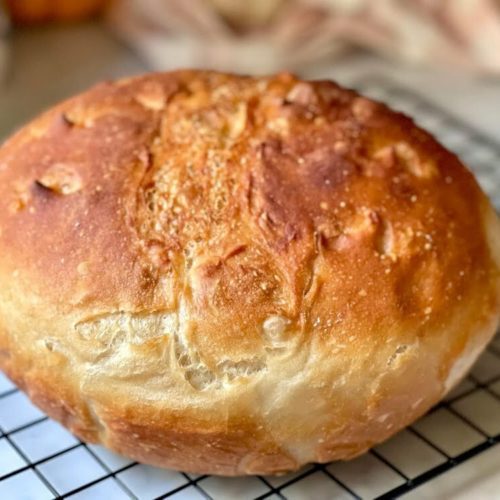
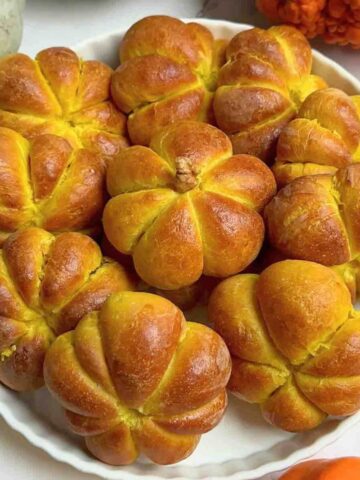

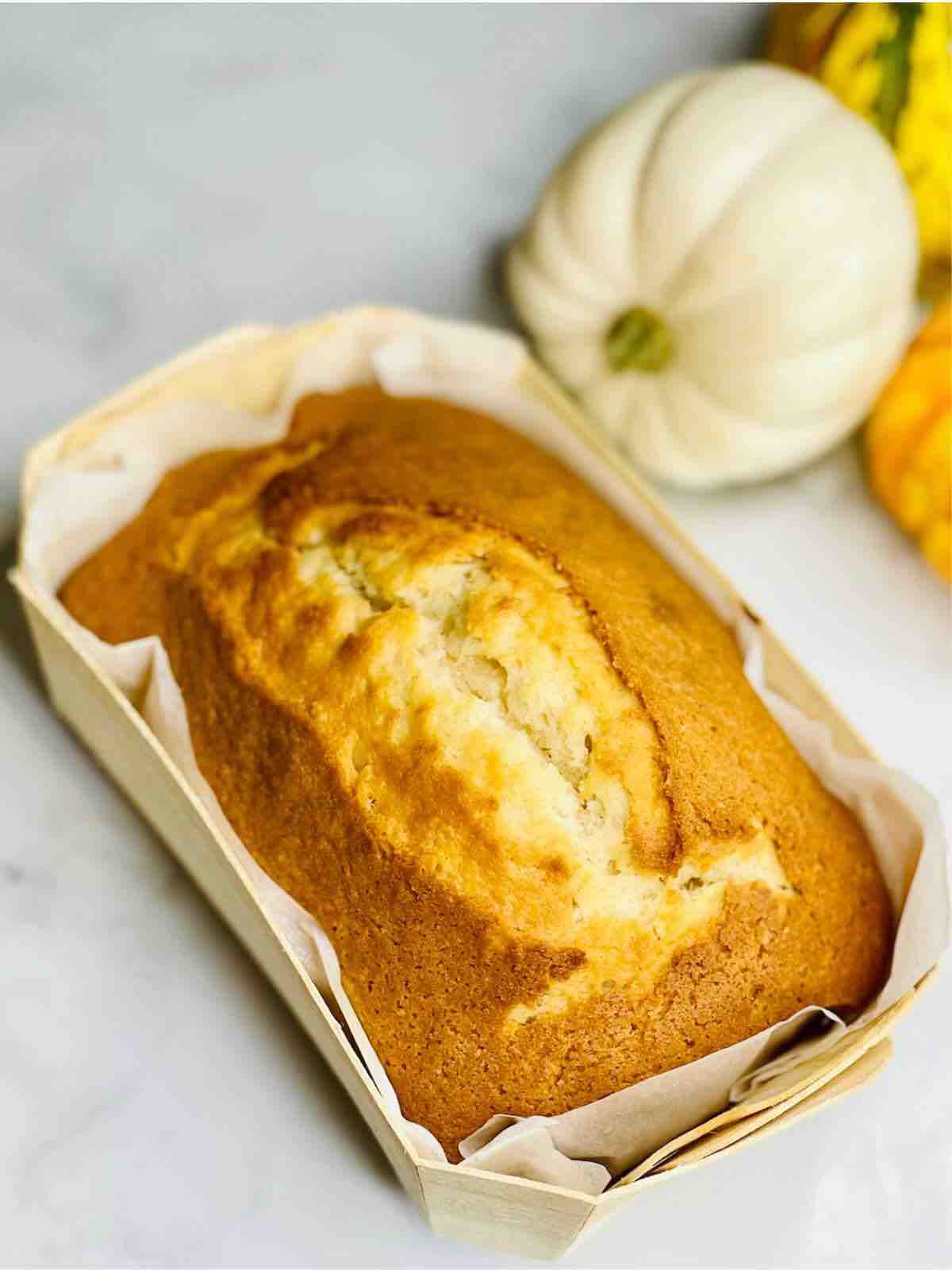
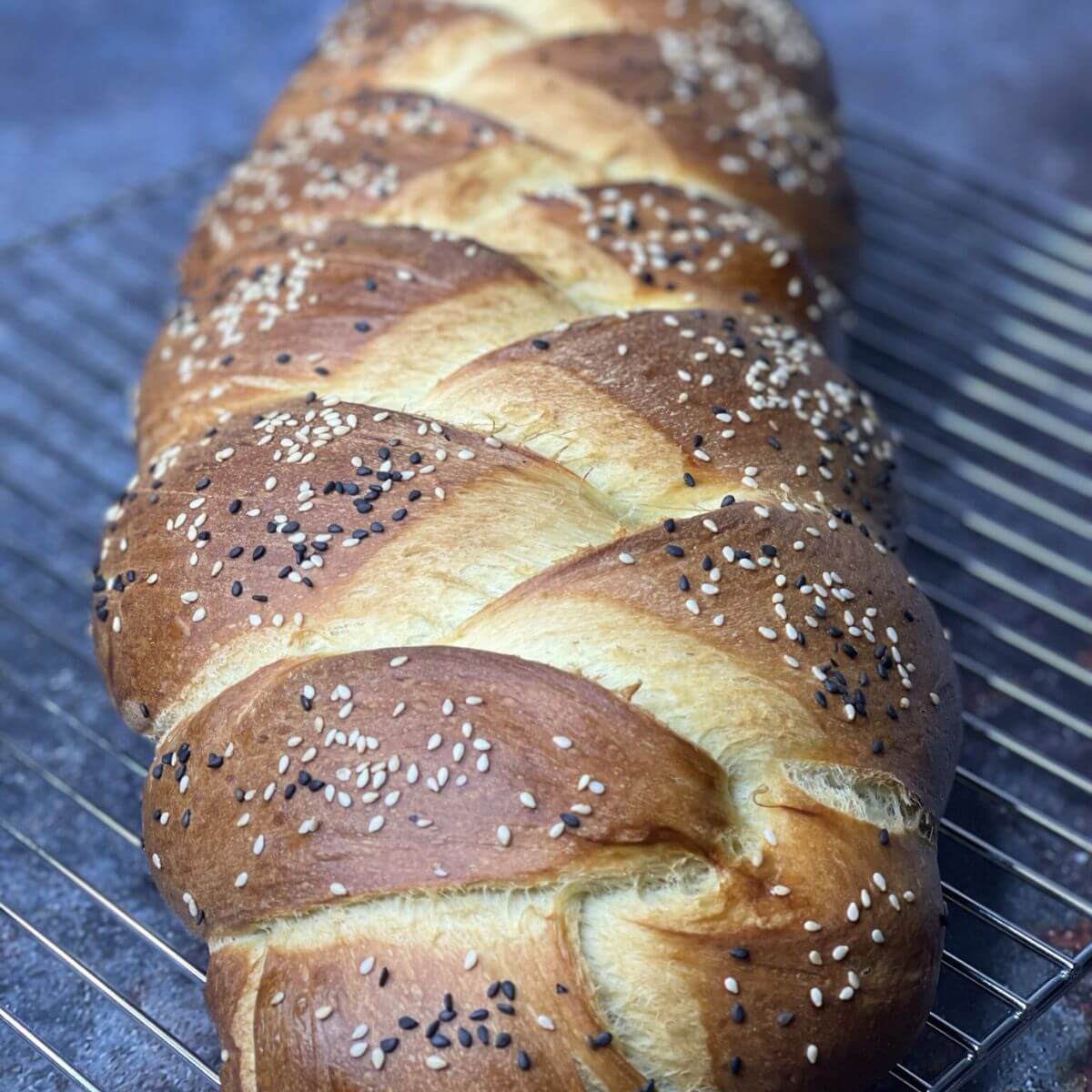
Claudia Ciorteanu says
My family loved this!
Juyali says
Indeed this recipe is perfect for beginners! Easy to follow and our bread turned out so so good. Thanks for another great recipe!
Liz says
This was the easiest bread I've ever made AND it was delicious!!! I'll be making it again soon!
Agnieszka says
I had no idea bread can be this easy! No kneading, no fuss. It made my house smell amazing, too.
Krystle says
I have wasted so many ingredients on homemade bread recipes that failed. This is SO easy and come out perfect every time.
Alexandra says
Homemade bread is one of my favourite things, and this is a delicious, simple recipe that produces the most perfect bread. I will make it again - thank you!
Nora says
This bread is awesome! So easy to make and really quick (for bread) 😀 ! I'll try it out this weekend! Thank you!
Andréa says
I love no knead bread, just because it's so easy to prepare. The crust with the airy inside are just perfect. Thank you for sharing!